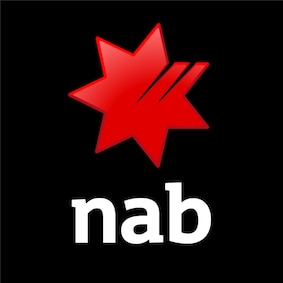What is a business overdraft?
A business overdraft is a revolving line of credit attached to your business transaction account which allows you to draw on funds, when you need, up to an approved limit. As a form of revolving credit, with no formal repayments, an overdraft can assist in managing business cashflow.
Operating a small business? Learn more in our guide to small business overdraft facilities.
How does a business overdraft work?
With a business overdraft, you only pay interest on the funds upon which you draw. It’s typically used by businesses to cover employee wages, supplier invoices, stock purchases or unexpected expenses.
Why use a business overdraft?
A business overdraft can be a useful tool which can assist with managing business finances. A business overdraft:
- Gives your business the ability to quickly access business finance as the funds are ready to use as needed.
- Can instil confidence when making business decisions knowing working capital is available for business purposes.
- Means there may be no need to set up a separate line-of- credit facility as the business overdraft is linked to an existing business transaction account (option to open a new account).
- Interest is only paid on the funds you use, so no need to pay interest on a loan that isn’t used.
What are the pros and cons of a business overdraft?
Pros of a business overdraft can include:
- Helping manage an uneven cash flow, especially if you have a seasonal or contracting business and you pay staff weekly but only get paid for the job on completion.
- Giving you access to general working capital so you can meet your expenses until you receive customer payments.
- Letting you take advantage of time-sensitive business opportunities, for example purchasing stock in bulk at a discounted price.
- Allowing your business to handle unexpected operating expenses, assisting with cash flow during periods when business is slow.
Cons of a business overdraft can include:
- Not ideal for financing long term business vehicle or equipment purchases.
- While useful in the short term, it may give some businesses a false sense of security and can mask ongoing issues with cash flow.
What’s the difference between a secured and unsecured business overdraft?
With a secured overdraft, the lender requires you to provide property, inventory, accounts receivables or other assets as security. If the loan repayments can’t be made, the lender may rely on these assets to clear any outstanding balance, interest or fees.
With an unsecured overdraft the lender doesn’t require you to provide assets as security. Instead, they will often look at the strength and cash flow of your business as security for the loan. However, unsecured overdrafts tend to have a higher interest rate than secured loans, as they’re deemed higher risk.
Learn more about secured vs unsecured loans.
How can I apply for a business overdraft?
For fast access to funds, you can easily apply online for our NAB QuickBiz unsecured business overdraft facility of up to $50,000. If approved, the funds could be ready next business day.
Alternatively, learn more about our business overdrafts or speak to a NAB Business Banker to have a solution tailored to you. Contact us to 13 10 12 or request a call back.
What’s the difference between interest charges on a business overdraft, a credit card and a loan?
Business overdrafts charge interest when your account balance drops below zero and generally only charge interest on the outstanding balance.
Credit cards have two common types of interest rates:
- purchase interest which is usually charged where the value of the purchases is not repaid within a set period, and
- cash advance interest rate, which is usually charged from the time funds are drawn from the card.
Make sure you understand when you could be charged both types of interest.
If you are unsure of which type of loan is best suited to your needs, contact us to 13 10 12 or request a call back.
Other business moments
What is a business loan and how does it work?
Learn more about business loans and how they work.
Understanding and managing your cash flow
Learn how to understand your cash cycles and set cash goals.
Business financing options to help your cash flow
A guide to financing options to help you meet your cashflow goals.
Related products and services
Unsecured business loans and overdrafts
Discover what unsecured business finance is and how to apply for it online.
Business loans
Manage your cash flow, purchase stock or inventory and grow your business with our wide range of business loans.
Business overdrafts
An overdraft can help you manage cash flow and cover business expenses.
Get in touch
Request a call back
Let us help with your business banking needs. Request a call back to chat with one of our business bankers.
Contact us
Explore our business banking contact information and get support with a wide range of products, services and topics.
Visit a NAB branch
Our business bankers are located all around Australia.
Terms and Conditions
Apologies but the Important Information section you are trying to view is not displaying properly at the moment. Please refresh the page or try again later.
The information contained in this article is intended to be of a general nature only. It has been prepared without taking into account any person’s objectives, financial situation or needs. Before acting on this information, NAB recommends that you consider whether it is appropriate for your circumstances. NAB recommends that you seek independent legal, financial and taxation advice before acting on any information in this article.
Target Market Determinations for these products are available at nab.com.au/TMD.

